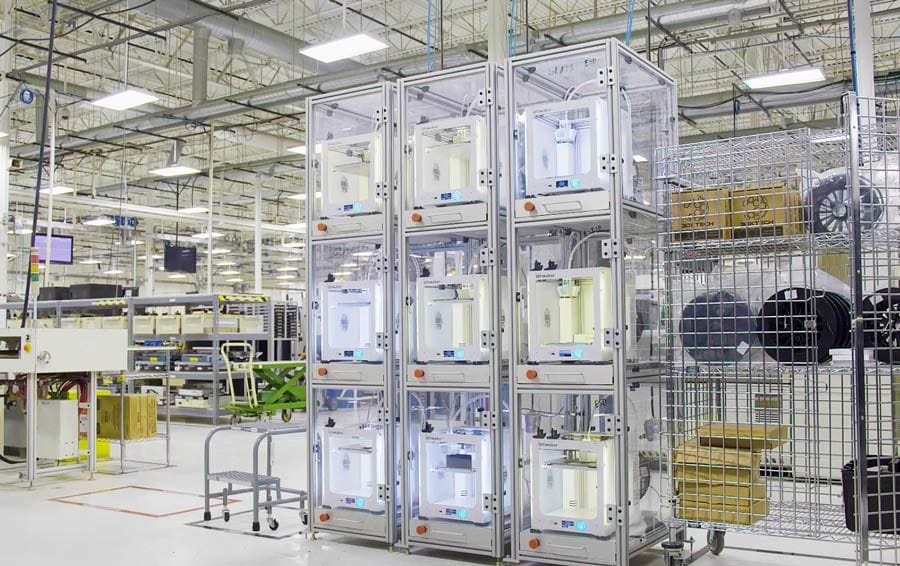 An array of Ultimaker 3D printers making tooling
An array of Ultimaker 3D printers making tooling
I’m seeing an increasing focus on tooling from multiple 3D printer manufacturers recently.
Today Ultimaker released a case study, for example, on how contract manufacturer Jabil was able to significantly reduce time, effort and cost by using 3D printed tooling.
Wait, what is “tooling”, exactly? The Business Dictionary defines it as:
Working or manufacturing aids such as cutting tools, dies, fixtures, gauges, jigs, molds, and patterns of a specialized nature which (unless substantially altered or modified) are limited in use to a specific production line or the performance of a specific contract or job.
This is an endless project, as each new product or part being manufactured or assembled will require some amount of new types of jigs, fixtures and aids to speed up the production process. That’s what it’s all about: making the most efficient use of the manufacturing system. Even if “done”, it’s really not because anyone could suddenly have an idea for a new type of efficiency, often enabled by yet more new tooling.
Thus it should be important to have the ability to rapidly produce such aids handy in any production factory setting.
Traditionally this has been done with many of the same tools one might have used for production: CNC mills, molds and the like. But 3D printing has become a new option in these circumstances, and it’s quite a good one.
The first 3D printers were severely constrained on the size of prints and more importantly the materials they could use. This often meant that any tooling jigs and fixtures produced on a 3D printer were typically too small or weak to last on a production line. As a result only a fraction of factories used 3D printing in this way.
But that’s rapidly changing as a result of 3D printer improvements. The newer machines are very often capable of 3D printing in many more engineering-quality materials, making the printed parts much stronger – and often quite larger. Today there are multiple options for large-format 3D printers, some exceeding 1m in print dimensions, and at reasonable costs as well.
Because of this change many 3D printer manufacturers are now focusing on tooling as a key market for their products. They can now address that market’s needs far better than in the past.
In the case of Ultimaker, they’ve helped equip Jabil with arrays of Ultimaker 3D printers right in the factory, where they can very rapidly produce directly usable tooling. Well, perhaps not “directly” usable, as the process of making “perfect” tooling requires multiple iterations, each getting closer to the ideal component.
But that is precisely the advantage of 3D printing: you can produce entirely unique prints on each job without having to make changes on the 3D printer. Design and print. Then do it again.
As you can see in the Jabil example, they have an array of Ultimakers, so in theory they could 3D print multiple variations of a tooling design simultaneously and then quickly test them. Concepts like this could very dramatically change the time required to set up a production line in a factory.
And in Jabil’s case, this is doubly important. As a contract manufacturer, they are besieged with countless customer requests to produce all manner of different items, each requiring yet more tooling. An OEM producing a single product line would experience far less need for tooling than a contract manufacturer.
Via Ultimaker

